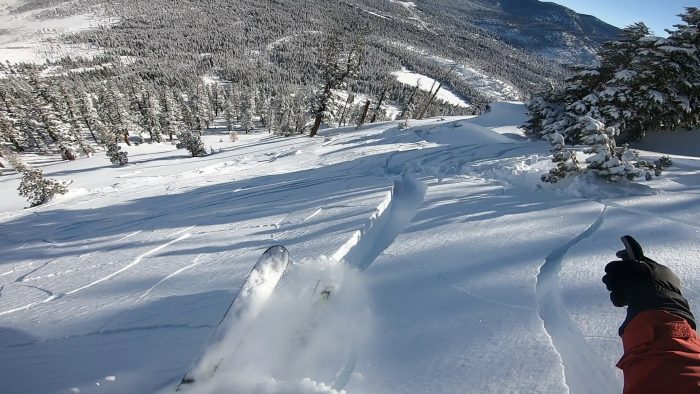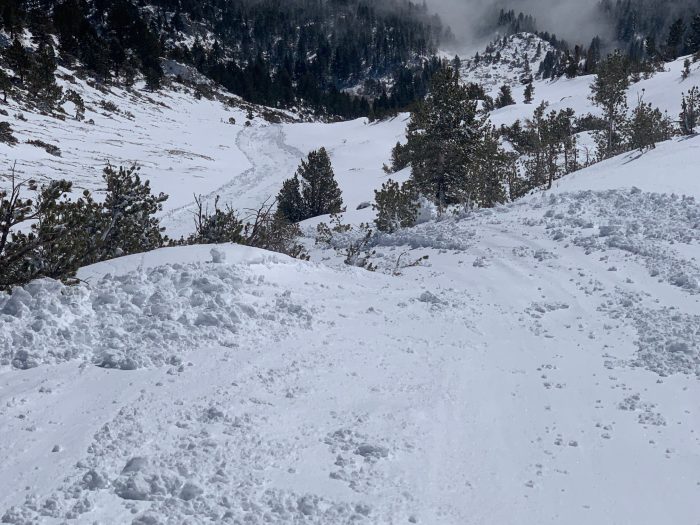Brought to you by SCARPA Backcountry Week
This is the sixth installment of my highlighting Backcountry Access’ Avalanche Safety videos for SCARPA Backcountry Week. Up to now in these videos we’ve looked at companion avalanche rescue in a recreational backcountry setting, including transceiver searching, probing, and shoveling, as well as how to handle a patient that you’ve successfully rescued from an avalanche. In the final video in the series, BCA Ambassador Sarah Carpenter of the American Avalanche Institute discusses backcountry evacuation of an avalanche victim.
The video below shows California Highway Patrol H-20 inserting SAR personnel to respond to a reported avalanche on Mt Tallac, CA on February 12, 2021. The debris field was searched and no victims were found. The skier involved was able to ski out of the backcountry and seek his own medical attention.
A couple of recent incidents in the Lake Tahoe, CA/NV backcountry highlight the importance of understanding how to handle backcountry evacuation. In one of these incidents, the victim was able to self extricate and get himself safely back to the trailhead without requiring an organized rescue. In the other incident, helicopter evacuation was required to get the victim out of the backcountry and to emergency medical care. Today’s Sierra Avalanche Center forecast stated:
Numerous human-triggered avalanches occurred during the day yesterday. The avalanches failed just above a crust at the base of Thursday night’s snow. Some of these were wind slabs (Mt Rose, Mt. Judah, Little Truckee Summit area, Blue Lakes area) and some were storm slabs (Silver Peak, Tamarack Peak, Mt. Tallac, Flagpole Peak, Slide Mtn). Some were likely a mix of the two types. Crown heights measured ~1 ft for most of the storm slabs and ~ 2 ft for the reported wind slabs. These avalanches occurred on steep slopes on N-NE-E-SE-S aspects. Sun and warming during the day appeared to have contributed to the reactivity on some slopes.
We know of at least two cases where the person who triggered the avalanche was also caught and carried by it. One on Flagpole Peak (reported as a storm slab) where the person lost a ski but was otherwise unharmed, and one in the Blue Lakes area (likely a wind slab) where the person was fully buried and suffered serious injuries.
Several natural avalanches were also reported that likely occurred during the storm on Thursday night (Frog Lake Cliffs, Donner Summit, Castle Peak, Mt. Tallac, Incline Lake Peak, Desolation Wilderness).
No avalanches were reported on the old weak layers like the Jan 22 crust/facet combo or the Dec 11 facets. These layers are buried under strong snow and have been gaining strength. The vast majority of observations and data collected across the region since the major January storm indicate that these old deep weak layers have gone dormant. Prior to this storm only a few snowpit tests still yielded some mixed (stable and unstable) results in a few isolated areas with a very weak and shallow snowpack. It is unlikely that these storms have added enough new weight to reactivate those deeply buried weak layers.
— Andy Anderson, Forecaster – Sierra Avalanche Center

Backcountry extrication of an injured person in your ski touring group is likely to be one of the most difficult things you’ll ever do. Even under the best circumstances, it will be physically and mentally challenging. Your backcountry decisions could end up with other recreational parties or Search and Rescue being involved in your rescue. Being prepared to execute your own rescue is an important responsibility as a backcountry traveler.
